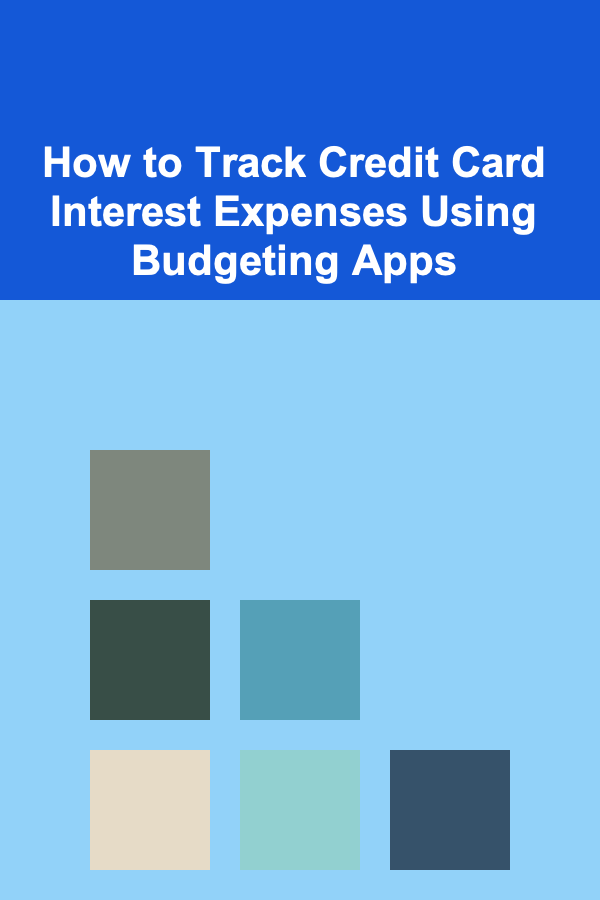
How to Create a Debt Repayment Checklist for Freelancers
ebook include PDF & Audio bundle (Micro Guide)
$12.99$7.99
Limited Time Offer! Order within the next:

Managing debt as a freelancer can be a challenging task. Freelancers are often faced with inconsistent income streams, a lack of benefits like health insurance or retirement plans, and the unpredictable nature of their work. As a result, managing personal finances, especially debt repayment, becomes even more crucial. Creating a debt repayment checklist is an effective strategy for freelancers to ensure they stay on track, avoid unnecessary stress, and regain control over their financial situation.
This article outlines how freelancers can create a comprehensive debt repayment checklist that fits their unique circumstances, focusing on practical steps, mindset shifts, and resources that can aid in managing and eliminating debt efficiently.
Understanding the Challenges Freelancers Face
Before diving into creating a checklist, it's essential to understand the challenges freelancers encounter when managing debt:
- Inconsistent Income: Unlike salaried employees, freelancers don't have a fixed monthly paycheck, which means their income can vary greatly month-to-month.
- Unpredictable Expenses: Freelancers often face fluctuating business expenses, such as software subscriptions, equipment costs, or office supplies.
- Lack of Employee Benefits: Freelancers don't have access to employer-sponsored benefits, including healthcare, retirement contributions, and paid time off, which can increase personal financial burdens.
- Delayed Payments: Freelancers sometimes experience delays in payments from clients, which can affect their ability to manage monthly expenses, including debt repayments.
- Multiple Sources of Debt: Freelancers often accumulate various types of debt, from business-related loans to personal credit card debt, making it more difficult to navigate repayment.
Despite these challenges, it's important to remember that effective debt management is possible through careful planning, discipline, and the right tools. Creating a debt repayment checklist can provide a clear roadmap for paying down debt while maintaining financial stability.
Step 1: Assess Your Debt
The first step in creating a debt repayment checklist is to take stock of all your debts. This may seem like an overwhelming task, especially if you have multiple sources of debt, but it's essential to have a full understanding of what you owe before you can create an actionable plan.
Types of Debt Freelancers Often Face:
- Credit Card Debt: Common for freelancers who use credit cards for business expenses or personal needs.
- Business Loans: Some freelancers take out loans to invest in equipment, software, or marketing.
- Student Loans: Many freelancers still have student loan debt that needs to be factored into their budget.
- Personal Loans: Personal loans for emergencies or everyday expenses can add up quickly.
- Medical Bills: Without employer-provided insurance, medical debt can become a burden.
- Taxes: Freelancers often owe taxes quarterly or annually, and if not properly planned for, these can add to your overall debt.
How to Assess Your Debt:
- List All Debts: Write down each debt you owe, including the total amount, the interest rate, the minimum monthly payment, and the due date.
- Categorize Your Debts: Separate your debts into business and personal categories to make it easier to manage.
- Determine the Total Debt: Add up all your debts to understand the full scope of your financial obligations.
Step 2: Prioritize Your Debts
Once you have assessed all of your debts, the next step is to prioritize them. Not all debts are created equal. Some debts may have higher interest rates, while others may be more pressing, like taxes or past-due payments.
Strategies for Prioritizing Debts:
- Focus on High-Interest Debt: Prioritize debts with the highest interest rates, such as credit card debt. These debts cost you more over time, so paying them down quickly should be a top priority.
- Pay Off Tax Debt Early: Tax debt is one of the most important types of debt to address because it can lead to legal consequences, such as fines or liens. If you owe taxes, focus on paying them off quickly to avoid further complications.
- Consider the Debt Snowball Method: The debt snowball method involves paying off your smallest debts first, then using the money you were spending on those debts to tackle larger ones. This can provide motivation as you see debts eliminated.
- Consider the Debt Avalanche Method: The debt avalanche method focuses on paying off the debt with the highest interest rate first. This strategy is more financially efficient in the long run, as it minimizes the amount of interest you pay.
Creating a Debt Repayment Strategy:
- Debt Snowball: List your debts from smallest to largest balance and focus on paying off the smallest balance first.
- Debt Avalanche: List your debts from highest to lowest interest rate and prioritize the one with the highest rate.
Step 3: Create a Realistic Budget
To successfully pay off debt, you need to ensure that you have enough income to cover both your living expenses and your debt repayment plan. A well-planned budget is crucial to balancing these financial priorities.
Tips for Freelancers to Create a Realistic Budget:
- Track Your Income: Keep track of your monthly income from all sources. This includes payments from clients, recurring projects, and side gigs.
- Estimate Your Expenses: Include both fixed expenses (e.g., rent, utilities) and variable expenses (e.g., business expenses, groceries, entertainment).
- Save for Taxes: As a freelancer, you must set aside money for taxes, which are typically not deducted automatically. Aim to save 25-30% of your income for taxes.
- Set Aside an Emergency Fund: While you're focusing on debt repayment, don't neglect saving for emergencies. Aim to build an emergency fund that covers at least 3-6 months of living expenses.
- Adjust Your Spending: Look for areas where you can reduce unnecessary spending, such as cutting back on subscriptions or eating out less. Use the money you save to pay down your debt faster.
Budgeting Tools for Freelancers:
- YNAB (You Need a Budget): A popular budgeting app that helps freelancers allocate funds to specific categories and track their spending.
- Mint: A free budgeting tool that tracks income and expenses and helps you visualize your financial goals.
- EveryDollar: An easy-to-use budgeting app that provides a simple framework for managing both personal and business finances.
Step 4: Set Specific Repayment Goals
Set clear, measurable, and achievable goals for repaying your debt. Without specific goals, it's easy to become overwhelmed or discouraged.
How to Set SMART Goals:
- Specific: Make sure your goals are clear and well-defined. For example, "Pay off $2,000 in credit card debt in the next 6 months."
- Measurable: Set an amount and time frame that can be tracked. For example, "Pay $300 per month toward my student loan."
- Achievable: Make sure the goal is realistic given your current financial situation.
- Relevant: Ensure that the goal aligns with your overall financial priorities.
- Time-bound: Set deadlines for when you want to achieve each repayment milestone.
Examples of SMART Debt Repayment Goals:
- Pay off $5,000 in credit card debt within 12 months by paying $416.67 each month.
- Save $1,000 for taxes by the end of the quarter by setting aside $333.33 per month.
- Pay off business loan of $2,500 within 6 months by allocating $417 per month to the loan.
Step 5: Automate Debt Payments
Automation is one of the most effective ways to stay on track with debt repayment. Setting up automated payments ensures that you never miss a due date, which can help avoid late fees and damage to your credit score.
Benefits of Automating Debt Payments:
- Prevents missed payments: Automated payments reduce the risk of missing a payment due to forgetfulness or inconsistent income.
- Improves credit score: Timely payments can boost your credit score, which can help you secure better loan terms in the future.
- Reduces stress: Knowing that your debt is being paid automatically allows you to focus on your business and personal life without worrying about bills.
How to Automate Payments:
- Set up automatic transfers from your bank account to your creditors.
- Use apps like Prism or Mint to track your bills and set reminders for due dates.
- Ensure that you have enough funds in your bank account to cover the payments each month to avoid overdraft fees.
Step 6: Monitor Your Progress
Track your progress regularly to ensure that you're on track with your debt repayment goals. Periodic checks will allow you to adjust your strategy if necessary and give you a sense of accomplishment as you see your debts decrease.
How to Monitor Progress:
- Use budgeting and financial apps to keep track of your payments and balances.
- Set reminders to review your debt repayment plan every month.
- Celebrate small victories, such as paying off a credit card or hitting a milestone in your loan repayment.
Step 7: Seek Professional Advice
If you find that managing your debt on your own becomes overwhelming, it may be beneficial to seek professional advice. Financial advisors, accountants, and debt counselors can help you create a more tailored debt repayment plan, negotiate lower interest rates, or even consolidate your debts into a more manageable payment.
When to Seek Professional Help:
- If you're struggling to make minimum payments.
- If you're considering debt consolidation or refinancing.
- If you're unsure about how to balance debt repayment with tax obligations.
Conclusion
Managing debt as a freelancer requires careful planning, discipline, and organization. By following a comprehensive checklist, you can regain control of your financial situation, reduce stress, and pave the way for a more stable and prosperous future. Keep in mind that debt repayment is a marathon, not a sprint. Stick to your plan, monitor your progress, and remember that every payment brings you one step closer to financial freedom. With the right strategy and mindset, freelancers can overcome debt and achieve their financial goals.
Reading More From Our Other Websites
- [Needle Felting Tip 101] How to Craft Needle‑Felted Musical Instruments with Functional Sound Holes
- [Home Staging 101] How to Create a Cozy Living Room Through Home Staging
- [Home Cleaning 101] How to Learn from Professional Cleaners: Tips and Techniques
- [Tiny Home Living Tip 101] Best Approaches to Managing Waste and Composting in Tiny Home Settings
- [Personal Care Tips 101] How to Choose the Best Nail Polish Remover for Your Nails
- [Biking 101] The Ultimate Guide to Choosing the Right Bike Cassette for Your Ride
- [Home Cleaning 101] How to Clean Your Home Using a Cleaning Schedule
- [Organization Tip 101] How to Leverage Partnerships and Sponsorships for Events
- [Personal Finance Management 101] How to Balance Saving for the Future and Enjoying Life Today
- [Personal Care Tips 101] How to Make a DIY Facial Scrub for Different Skin Concerns

How to Choose Lighting for Different Ceiling Heights
Read More
How to Store Your Holiday Decorations Efficiently
Read More
Top Strategies for Utilizing Online Resources for Learning New Skills Effectively
Read More
How to Save Money on Educational Supplies: A Comprehensive Guide
Read More
How to Track Credit Card Interest Expenses Using Budgeting Apps
Read More
How to Create an Actor's Emergency Fund & Financial Safety Net
Read MoreOther Products

How to Choose Lighting for Different Ceiling Heights
Read More
How to Store Your Holiday Decorations Efficiently
Read More
Top Strategies for Utilizing Online Resources for Learning New Skills Effectively
Read More
How to Save Money on Educational Supplies: A Comprehensive Guide
Read More
How to Track Credit Card Interest Expenses Using Budgeting Apps
Read More